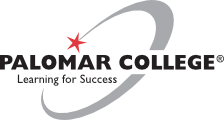
Course Outline
GEOL 158 - Small Unmanned Aircraft Systems Procedures and Regulations
Fall Semester 2018
Basic Course Information
Courses numbered 1 - 49 are remedial or college preparatory courses which do not apply toward an A. A. Degree and are not intended for transfer. Courses numbered 50-99 apply toward an AA Degree, but are not intended for transfer. Courses numbered 100 and higher apply toward an AA Degree and/or are intended for transfer to a four-year college or university.
D - Credit - Degree Applicable
GEOL
Small Unmanned Aircraft Systems Procedures and Regulations
Units and Hours
1
1
Grade/Pass/No Pass
Hour Type
Units
Weekly Hours
Semester Hours x 16 Weeks
Semester Hours x 18 Weeks
Lecture Category -
1.00
1.00
x 16 Weeks - 16.00
x 18 Weeks - 18.00
Lab Category -
0.00
0.00
x 16 Weeks - 0.00
x 18 Weeks - 0.00
Subtotal -
1.00
x 16 Weeks - 16.00
x 18 Weeks - 18.00
Out of Class Hour -
2.00
x 16 Weeks - 32.00
x 18 Weeks - 36.00
Totals -
3.00
x 16 Weeks - 48.00
x 18 Weeks - 54.00
Hour Type
Units
Weekly Hours
Semester Hours x 16 Weeks
Semester Hours x 18 Weeks
Lecture Category -
1.00
1.00
x 16 Weeks - 16.00
x 18 Weeks - 18.00
Lab Category -
0.00
0.00
x 16 Weeks - 0.00
x 18 Weeks - 0.00
Subtotal -
1.00
x 16 Weeks - 16.00
x 18 Weeks - 18.00
Out of Class Hour -
2.00
x 16 Weeks - 32.00
x 18 Weeks - 36.00
Totals -
3.00
x 16 Weeks - 48.00
x 18 Weeks - 54.00
Catalog Description
This course will equip students with knowledge about the regulations and procedures governing the safe and legal operation of small unmanned aircraft systems (sUAS), commonly referred to as "drones". The scope of this course coincides with the knowledge areas in the Federal Aviation Administration's Part 107 airman knowledge test for a Remote Pilot Certificate with a sUAS rating, and is intended to prepare students who wish to become commercial sUAS pilots for the knowledge test.
Specific Course Objectives
Objective
Upon successful completion of the course, the student will be able to:
- Recall and explain applicable regulations relating to sUAS rating privileges, limitations, and flight operation;
- Identify and understand airspace classification, operating requirements, and flight restrictions affecting sUAS operation;
- Predict and demonstrate an understanding of aviation weather sources and effects of weather on sUAS performance;
- Describe considerations in sUAS loading;
- Recall and apply sUAS emergency procedures;
- Recall and implement crew resource management;
- Recall and implement radio communication procedures;
- Identify and explain factors determining the performance of sUAS;
- Describe the physiological effects of drug and alcohol on remote pilots;
- Recall and apply aeronautical decision-making and judgement;
- Describe airport operations;
- Recall and implement maintenance and preflight inspection procedures;
- (All objectives on this page were adopted from the distinct knowledge areas of the airman knowledge test as written in the official FAA Remote Pilot sUAS Study Guide).
Methods of Instruction
Methods of Instruction may include, but are not limited to, the following:
Demonstration
Lecture
Videos/Film
Content in Terms of Specific Body of Knowledge
- Federal aviation regulations
- History of FAA
- Rulemaking process
- Types of operation
- Public operations
- Civil operations (commercial)
- Recreational operations
- Part 107 certification requirements
- Registration of sUAS
- Airspace
- Flight rules
- Visual
- Instrument
- National airspace
- Class A
- Class B
- Class C
- Class D
- Class E
- Class G
- Airspace entry requirements
- Flight restrictions
- Special use airspace
- Prohibited airspace
- Restricted airspace
- Warning airspace
- Alert airspace
- Military operations area airspace
- Temporary flight restrictions
- Advisory circular
- Navigation and Maintenance
- Pre-flight planning
- Latitude and longitude
- Time zones
- Determining altitude
- Aeronautical sectional charts
- Radio aids
- Airports
- Airspace
- VFR checkpoints
- Military training routes
- Chart legends
- Pre-flight briefing and inspection
- Post-flight debriefing and inspection
- Right of way
- Maintenance
- Aviation Weather
- Atmosphere and air pressure
- Heat and temperature
- Wind
- Precipitation
- Micrometeorology in urban settings
- Aviation weather services
- Weight and Balance
- Terminology
- Weight and balance control
- Calculating weight and balance
- Emergency procedures
- In-flight emergencies
- Loss of link
- Fly-aways
- Loss of power
- In-flight shutdowns
- Crew Resource Management
- Risk management
- Risk assessment
- Rick factors
- Mitigating risk
- Hazardous attitudes
- Decision making process
- Situational awareness
- Airport Operations and Radio Communications
- Airport operations
- Airport information sources
- Notices to Airmen
- Traffic patterns
- Airport signs
- Towered and nontowered airports
- Unicom and Multicom
- Communicating with ATC
- Collision avoidance
- Physiological Effects of Drug and Alcohol
- Medical conditions
- Medications
- Alcohol
- Regulatory citings
Textbooks/Resources
Textbook
Federal Aviation Administration
Remote Pilot-Small Unmanned Aircraft Systems Study Guide
Washington DC
Flight Standards Services
2015
Assignments
Students will be required to read the official FAA Remote Pilot sUAS Study Guide and lecture presentations.
Students are expected to read over existing approved airspace authorization requests and write similar waiver requests.
Students will be expected to apply their knowledge to develop contingency plans in response to various hypothetical situations they are expected to encounter during sUAS operations (e.g. loss of link, battery malfunction).
Students are expected to research and discuss legal memos and press releases from the FAA in order to understand how the constantly changing sUAS regulatory landscape may affect them.
Methods of Assessment
Evaluation Method
- Class Participation
- Class Work
- Demonstration
- Exams/Tests
- Homework
- Quizzes
Open Entry/Open Exit
- Not Open Entry/Open Exit
Repeatability
No
Contact Person
Cheung, Wing H.